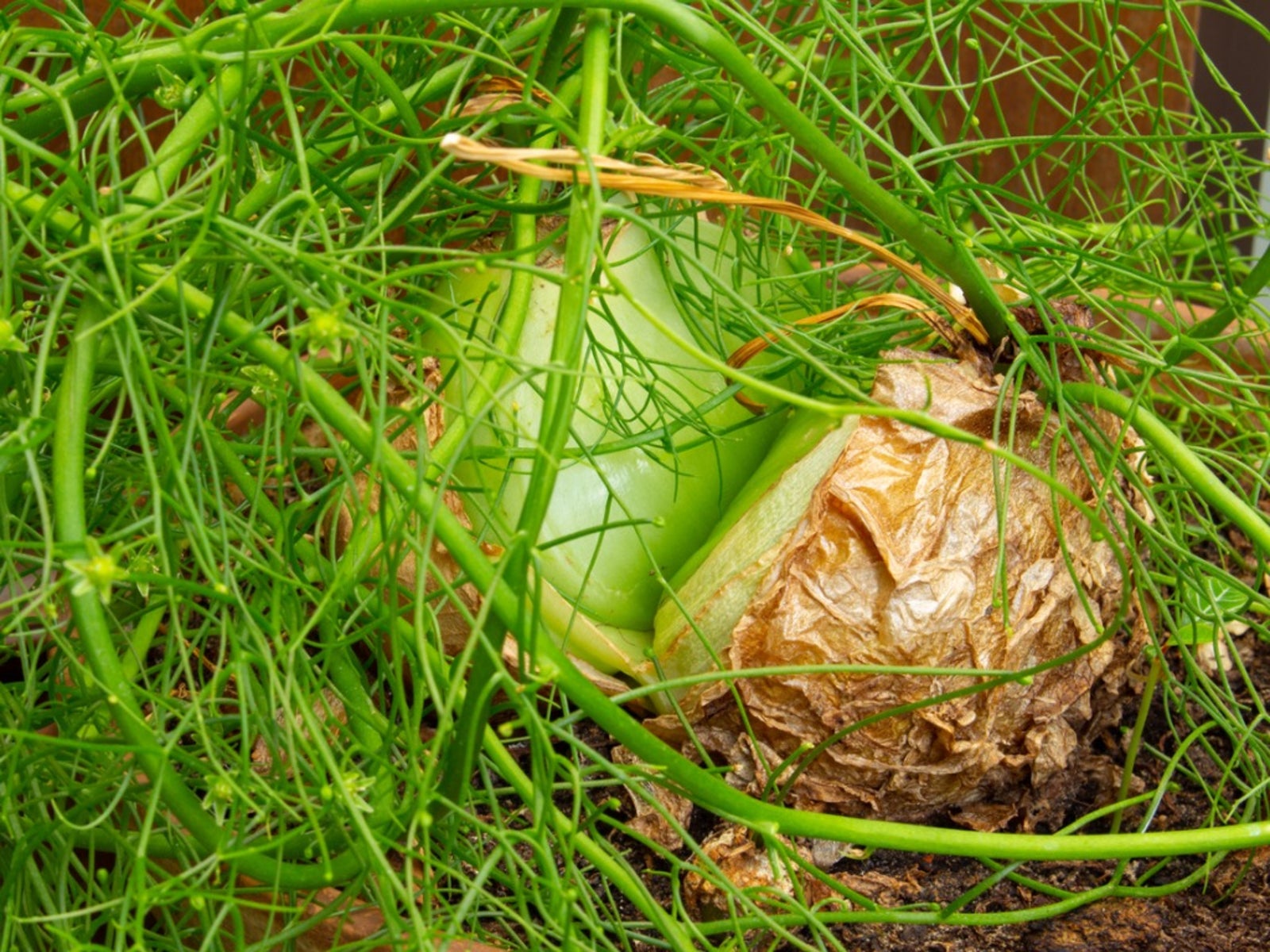Bowiea Sea Onion Info: Tips For Growing Climbing Onion Plants


The climbing onion plant is not related to onions or other alliums, but is more closely aligned with lilies. It is not an edible plant and can be described as an interesting, but not as pretty, specimen of flora. Bowiea sea onion is another name for the plant, which is a succulent without any leaves. The plant grows from a bulb which is often outside of the soil. Growing climbing onion as a houseplant will amaze visitors and give all who see it something to ponder.
Details about Bowiea Sea Onion
Bowiea is the genus for the climbing onion plant. These plants are native to Africa and indigenous where soil is poor, moisture is minimal and heat is severe. They grow well in most home interiors provided there is not excessive humidity. The plant itself is a curiosity, with its surface growing bulb and green starry flowers. Climbing sea onions (Bowiea volubilis) grow out of a bulb. The plant has no obvious leaves because the onion-like bulb is comprised of compressed leaf structures. As with any bulb, the onion houses the embryo and holds carbohydrates for continued plant growth. Climbing onion plants may grow up to 8 inches (20 cm.) across in their native habitat but usually only achieve 4 inches (10 cm.) in captivity. They produce offsets or smaller bulbs as the plant matures, which can be divided away from the parent to produce new plants. Slender stems sprout from the bulbs and branch out into feathery flower stalks. Numerous tiny 6 pointed starry white to green blooms appear along the stems.
Growing Climbing Sea Onion
The best medium for growing climbing sea onion is a gritty, well-draining soil mixture. If you wish to make your own mixture, combine half potting soil and half sand. Choose a pot with drainage holes, as excess moisture can make the bulb rot. Climbing sea onions like to be in a crowded pot, so select one that's just barely larger than the bulb. Place the container in full, but sheltered, sun or partial shade. Excess heat will cause the bulb to callus over and become dormant, while consistent even warmth and moderate moisture will allow the plant to grow all year. Divide the offsets when they are half the size of the parent plant and pot them up in the same soil mixture.
Climbing Onion Care
Overwatering is a major concern with this plant. Best growth is achieved with moderate and consistent moisture, but never let the plant sit in water and allow the soil to dry out between watering. Stop watering completely when the stalks dry out after blooming in late summer. At this point, you can cut off the spent stems when they begin to dry out and brown. Resume watering when the bulb re-sprouts, generally in fall. You can move the plant to a sheltered area outside in summer as long as the plant is kept above 50 F. (10 C.). Supplemental feeding is not a necessary part of climbing onion care. Provide the airy green stems with a support structure or simply allow them to tangle around themselves. This is an amazing plant with a great deal of interest that is fun to have around the house, and will keep you guessing as it goes through its growth phases.
Gardening tips, videos, info and more delivered right to your inbox!
Sign up for the Gardening Know How newsletter today and receive a free copy of our e-book "How to Grow Delicious Tomatoes".

Bonnie Grant is a professional landscaper with a Certification in Urban Gardening. She has been gardening and writing for 15 years. A former professional chef, she has a passion for edible landscaping.
-
 Want The Longest Lasting Hydrangea Flowers? Grow These 8 Panicle Hydrangea Varieties
Want The Longest Lasting Hydrangea Flowers? Grow These 8 Panicle Hydrangea VarietiesFor ornamental shrubs that deliver the longest flowering seasons with plush blooms and delicate hues, these panicle hydrangea varieties are essential in your yard
By Tonya Barnett
-
 Moody Blooms For Spring: 8 Types Of Black Flowers To Add Drama To Spring Displays
Moody Blooms For Spring: 8 Types Of Black Flowers To Add Drama To Spring DisplaysFrom midnight burgundies to inky violets, several types of black flowers can enrich and embolden a spring display. Try these brooding bloomers for a moody garden
By Tonya Barnett